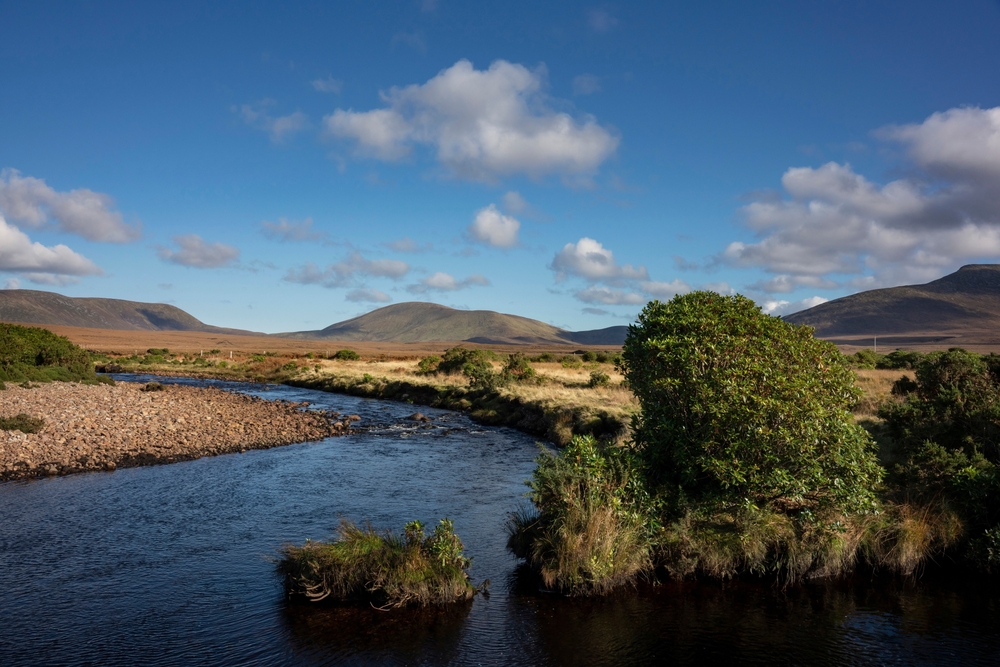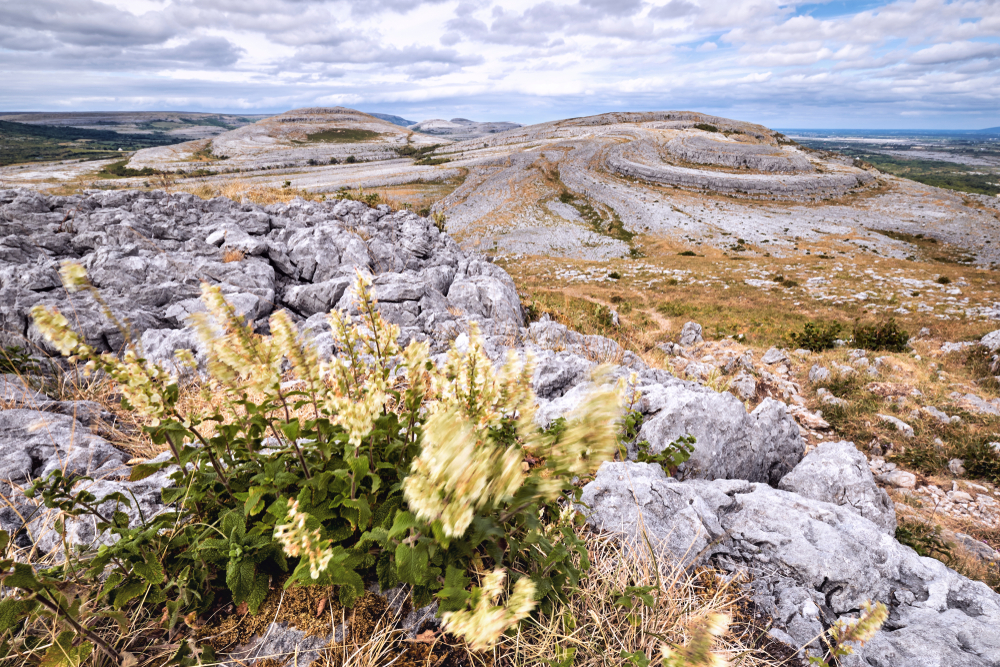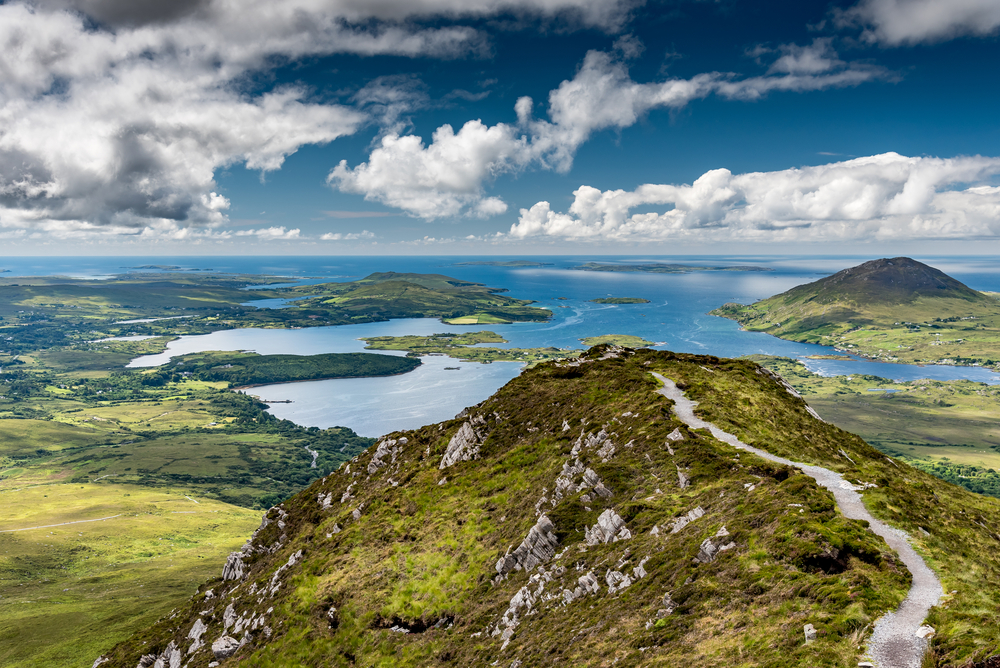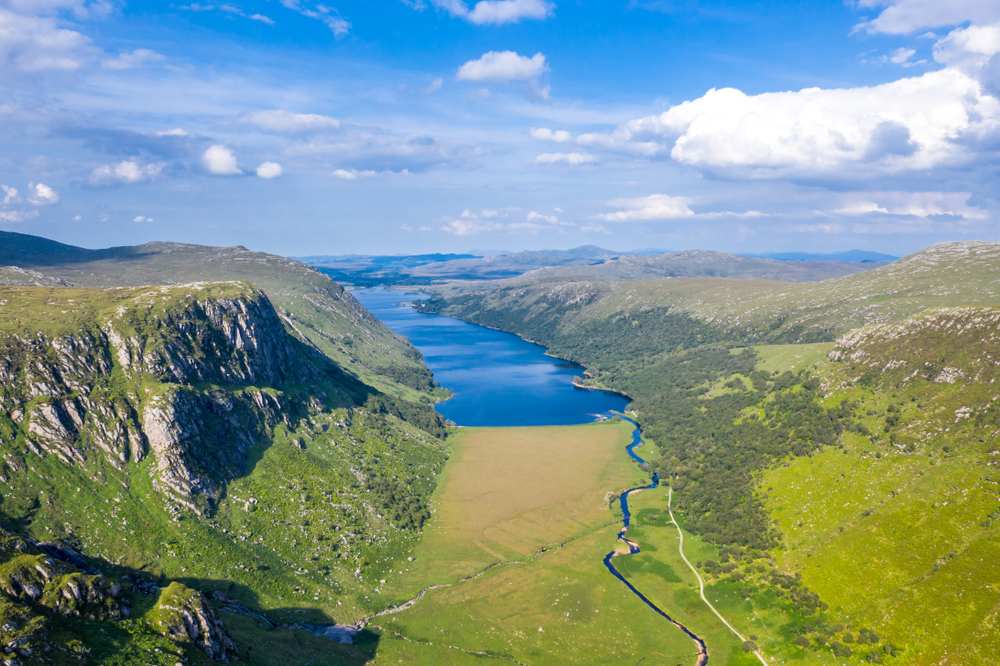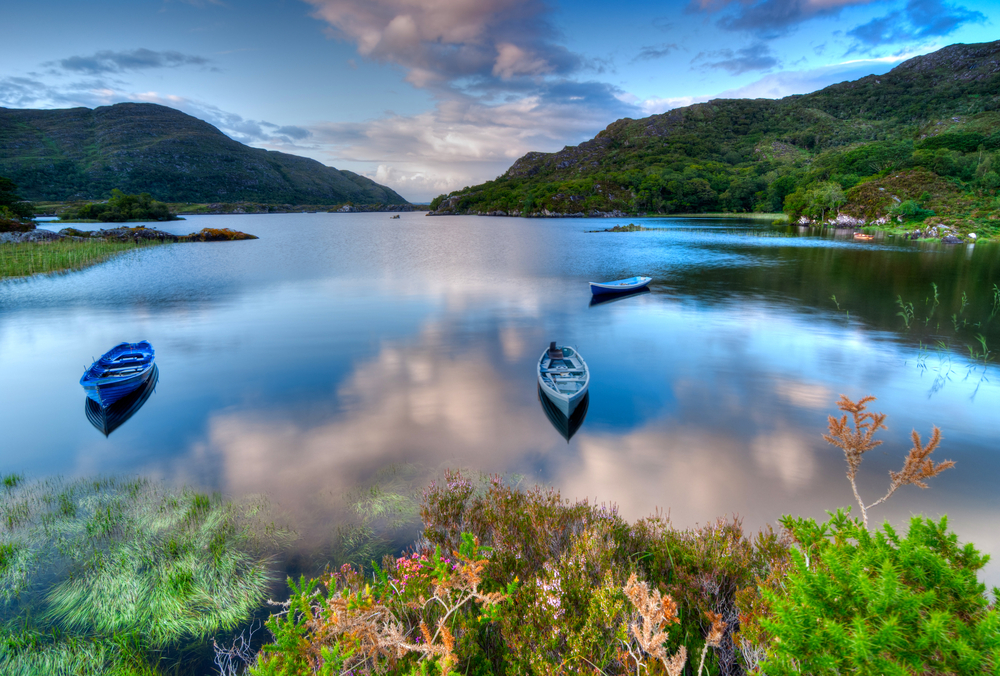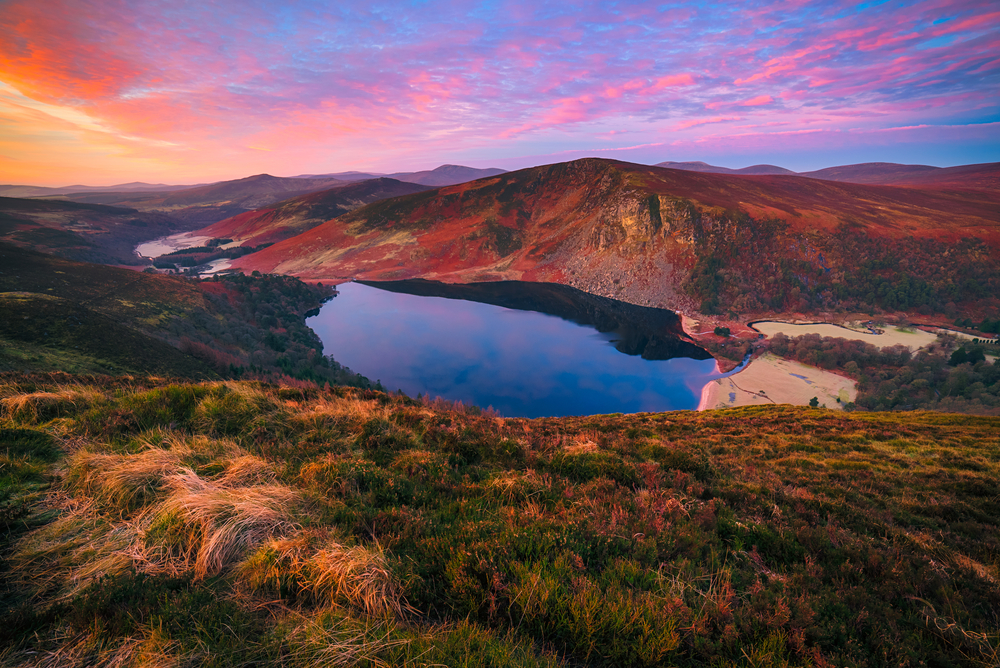Wild Nephin Overview
Wild Nephin National Park, also known as Páirc Náisiúnta Néifinn Fiáin in Irish, is located in County Mayo, on the west coast of Ireland. Spanning approximately 78 square miles (200 square kilometers), it is one of Ireland’s largest and most unspoiled wilderness areas.
The park is part of the Nephin Beg Mountain Range, characterized by rugged terrain, rolling hills, and expansive blanket bogs. These bogs are among the last remaining pristine examples in Western Europe, making the park an ecological treasure. Visitors will also encounter ancient forests and scenic lakes, including Lough Feeagh and the Owenmore River, which add to the park’s serene beauty.
The terrain of Wild Nephin National Park is dramatic and varied, with the Nephin Beg Mountains rising to impressive heights, such as the summit of Slieve Carr at 721 meters (2,365 feet). The landscape is shaped by glacial activity and centuries of peat formation, resulting in a unique patchwork of bogs, heaths, and woodlands.
Vegetation in the park includes hardy species adapted to the wet, acidic soil, such as heather, mosses, sedges, and patches of native oak and birch woodlands in sheltered valleys. Seasonal wildflowers, like bog cotton and orchids, add subtle bursts of color to the park’s untamed vistas.
Wildlife thrives in this remote wilderness, offering nature enthusiasts a chance to spot some of Ireland’s rarest species. Red deer roam the hillsides, while elusive pine martens make their home in the woodlands. The park is also home to otters, foxes, and hares, and its rivers and lakes teem with brown trout and Atlantic salmon.
Birdlife is particularly abundant, with species like the peregrine falcon, merlin, and red grouse making appearances. During the summer months, visitors may hear the haunting call of the cuckoo or catch a glimpse of skylarks and meadow pipits soaring overhead.
Wild Nephin National Park’s popularity has grown due to its designation as a Gold-Tier International Dark Sky Park, one of only a few in the world. Stargazers flock to this remote location to experience unparalleled views of the Milky Way and constellations free from light pollution.
Hiking is a major draw, with trails like the Bangor Trail and Letterkeen Loop offering routes through breathtaking wilderness. Visitors can also enjoy kayaking and fishing on the park’s pristine waterways, adding to the variety of outdoor activities available.
Conservation efforts within Wild Nephin focus on preserving its unique bogland ecosystem and rewilding its landscape. Successful initiatives include restoring native woodlands and reintroducing species like the white-tailed sea eagle, a testament to the park’s commitment to biodiversity.
However, challenges such as climate change, invasive species, and peatland degradation require ongoing management. Collaborative efforts between local communities, park authorities, and conservation groups aim to address these issues while fostering sustainable tourism and environmental education.








































































